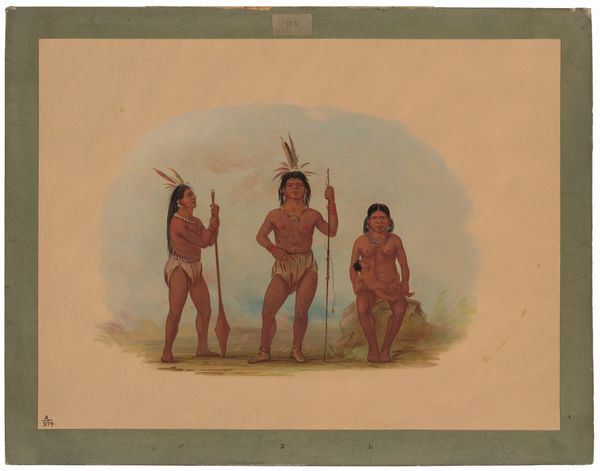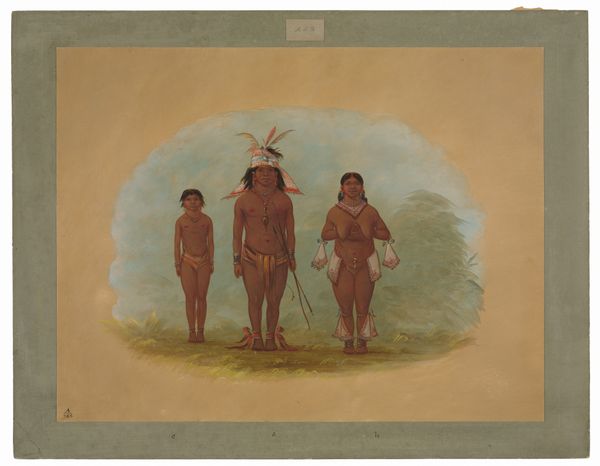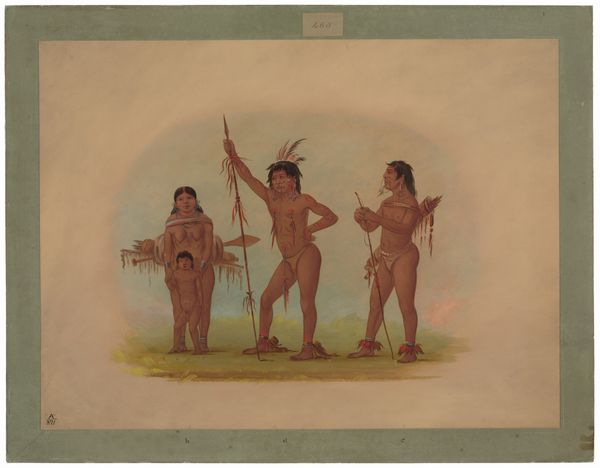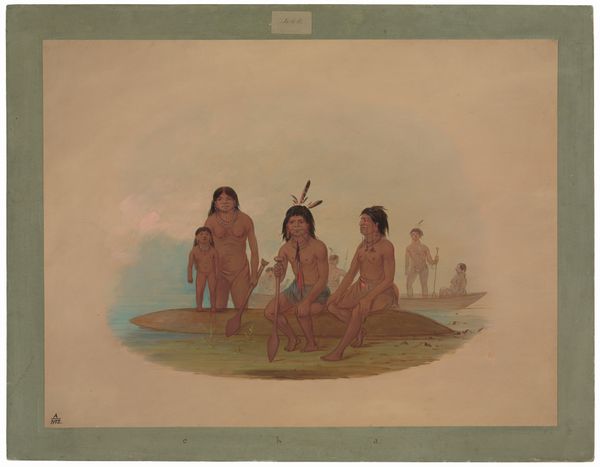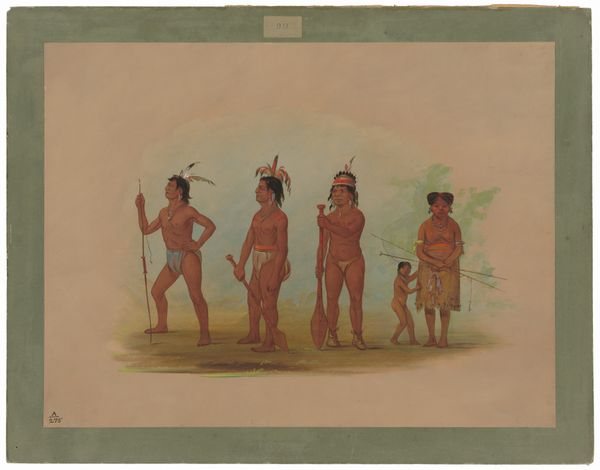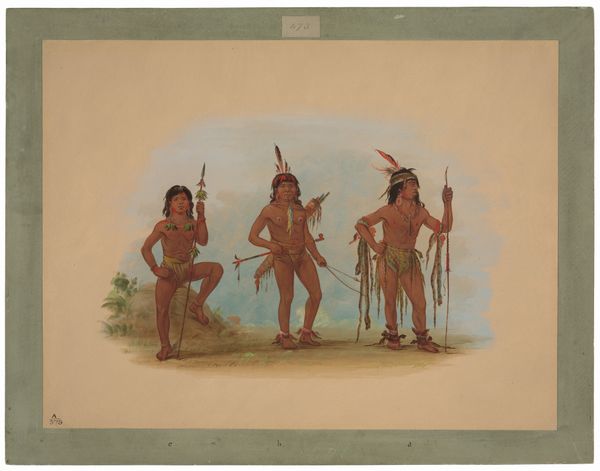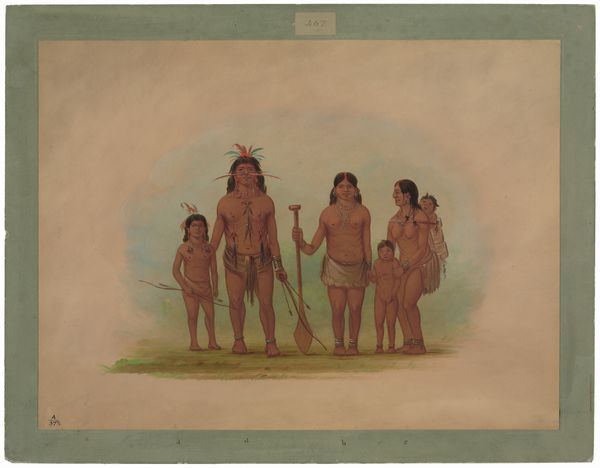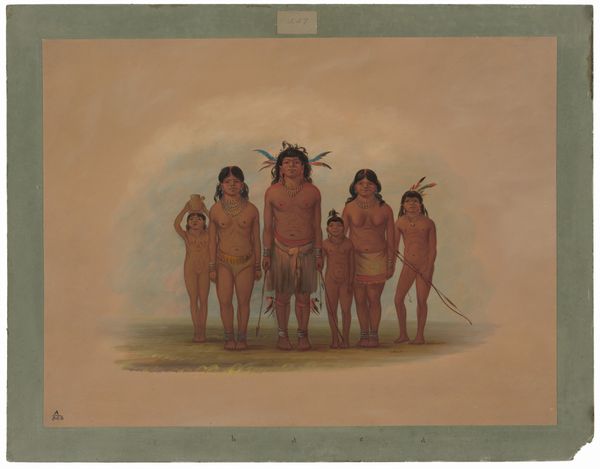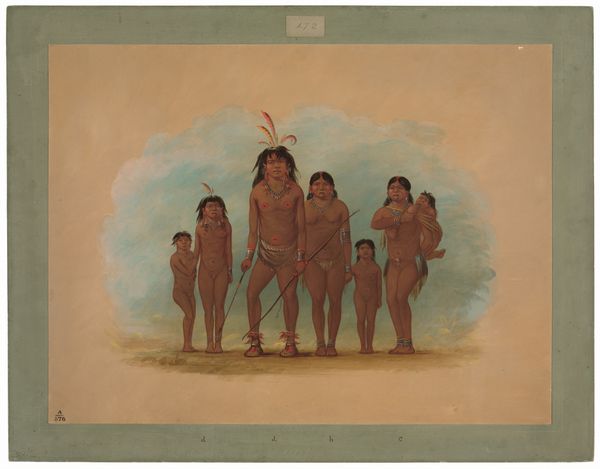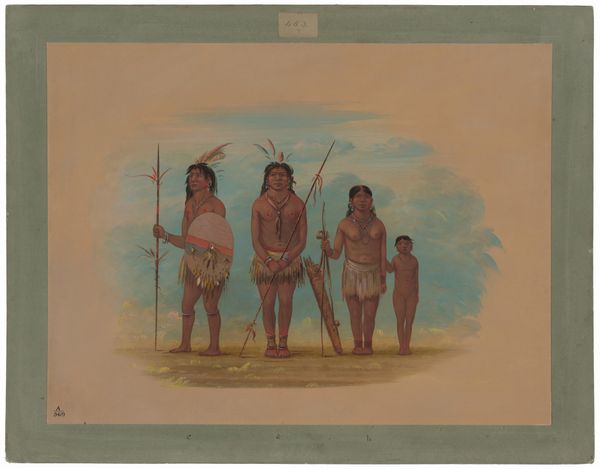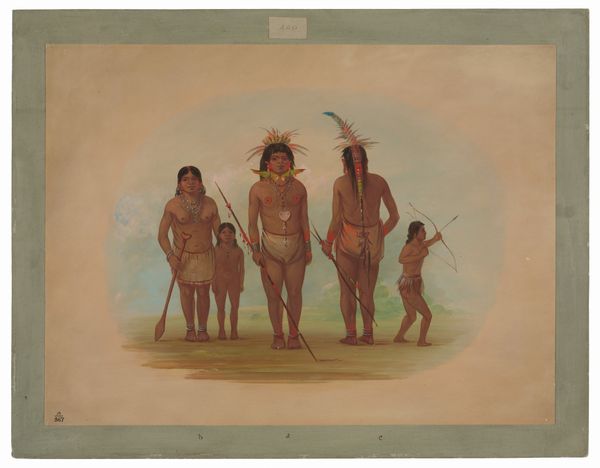
painting, gouache
#
portrait
#
water colours
#
painting
#
gouache
#
watercolor
Dimensions: overall: 46.5 x 62.2 cm (18 5/16 x 24 1/2 in.)
Copyright: National Gallery of Art: CC0 1.0
Curator: Standing before us is "Four Angustura Indians" by George Catlin, created between 1854 and 1869 using watercolor. What are your immediate impressions? Editor: A tableau vivant. The figures are arranged almost formally, yet their expressions suggest a natural, almost melancholic repose. The pale backdrop intensifies the figures' earth tones. Curator: That backdrop seems characteristic of Catlin's work. Here, the representation feels rooted in specific details, a visible effort to portray authentic cultural identities of the Angustura. He carries immense historical weight given his work documented Indigenous people throughout the American continent. Editor: Yes, his portrayals are valuable records, yet we must approach them acknowledging the era's sociopolitical power dynamics. It begs the question, how might these Angustura peoples viewed these depictions of themselves at the time? Curator: Exactly. Look at how the weapons they hold – the spear and club – become almost iconic representations of their roles and culture. They're tools for survival but also symbols deeply tied to masculinity. The younger women embody a different type of coming-of-age portraiture. Editor: It's impossible to ignore the colonial gaze here. Catlin frames these figures, to some extent, through the prevailing aesthetics and curiosities of his time. This artwork exists in a historical space where indigenous representation often served purposes beyond mere documentation. Curator: That's what makes the watercolor medium so interesting. Its fluidity offers a contrast to the stiffness inherent in more academic forms. Perhaps Catlin sought to strike a balance, blending observational fidelity with emotional expression? Editor: Maybe, but the formal arrangement counters a spontaneous impression. Though watercolor can lend itself to softness and naturalism, there's an undeniably staged quality here, a capturing and classification that echoes larger projects of empire. Curator: It highlights the complexities in the narrative. What's been captured and preserved may say less about Angustura life and culture than it reveals about how prevailing narratives were shaped during this pivotal period of interaction between native communities and western expansion. Editor: Absolutely, "Four Angustura Indians," I think prompts introspection about representation, legacy, and how we grapple with the weight of history visually imprinted on our present.
Comments
No comments
Be the first to comment and join the conversation on the ultimate creative platform.
